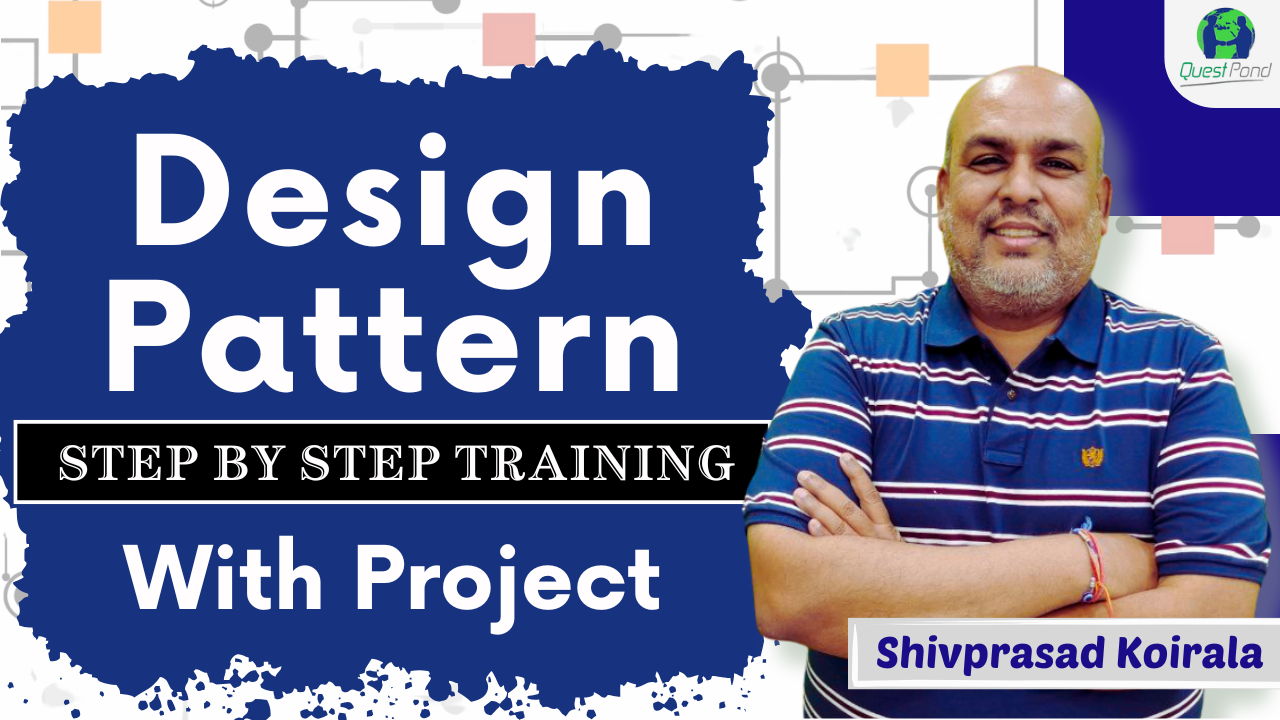What you'll learn :-
What will students learn in your course?
- Dedicated chapter covering Repository and UOW pattern , Generic repository , EF ( ORM ) VS Repository , Mock testing and Unit testing with Repository,
- Dedicated topic on Singleton as its one of the most discussed pattern , Singleton VS Static, Thread Safety in Singleton, Double NULL check , Lazy Keyword
What are the requirements or prerequisites for taking your course?
- Seniors Programmers who are looking for Senior technical or Architect position.
- Said and Done Any one with 1 to 2 years of experience can also look from knowledge perspective.
Who is this course for?
- This course is meant for developers who are looking to crack Software Architect Interviews
Training Content
Design pattern and Architecture pattern training Syllabus
| Guru Mantra of Architects | • How do human ( devs) understand complex system? • Philosophy of decoupling, classification -- Abstraction. • Definition of good architecture: - Decoupling changes. |
| OOP , SOLID , DI , IOC :- The Architects View | • The way Humans understand complex systems. • Classification and Abstraction. • Connection between Abstraction and Decoupling. • Abstraction Shows way to Encapsulation. • Classification and Polymorphism = Decoupled systems. • Interface and Abstract classes. • SOLID Principles the architect ways of looking. • Aggregation, Composition and Association. • IOC, DI And Simple Factory. • Design patterns, Architecture Patterns and Architecture Style. |
| Design patterns Fundamentals | • What is Design pattern, who is GOF? • Design pattern vs Architectural Pattern vs Style. • Creational, Structural and Behavioural. • GOF and NON-GOF patterns. • Individual learning vs DDD way of learning. |
| Learning some patterns Individually | • Singleton Pattern • Factory Pattern • Adapter Pattern • Bridge Pattern • Composite Pattern • Decorator Pattern • Template Pattern • Strategy pattern. • Façade Pattern. • Memento and Flightweight. |
| Strategic DDD | • Microservice Definition with an example • Monolith :- The other side of the coin • Benefits of Microservices :- Team Autonomy,Independent development , deployment • Understanding the vocabulary DOMAIN • Understand the term DDD ( Domain Driven Design) • Domain vs Classes / Objects • Strategic DDD and Tactical DDD phases • Subdomains , Core domain , Supporting domain and Generic Domain • Importance of Domain Classification. • Bounded Context :- The Logical Boundary. • Context Map :- The Bridge between Bounded Context • Understanding Context Map patterns • Upstream and Downstream • Understanding the 9 Context Map Patterns • Context Map are guidelines and not ultimate truth. • Context Map pattern Confusion |
| Tactical DDD | • Understanding Entity , Value objects and Service objects. • Implementing in C# Entity , Value objects and Services the right way. • Id’s and GUID’s in a Entity. • Let the objects behave as they speak :- Huh Reference Equality. • The Love Triangle ( Equals , == , GetHashCode) • Why value objects and why not Utility ? • Value objects , Immutability and side effects. • Spicing it up with init • Value objects with record and structs • Record and EF • Why struct is not good , EF issues , By val • Immutability = Get plus constructor. • Mind the Collision , using hashcode.combine. • Aggregate Root , maintaining integrity and transactional scopes. • Iterator patter in Aggregate root. • Application service , Domain Service and Infrastructure service. • Not DDD Anamic vs Rich model • Factory in DDD • Factory in DDD vs Factory in GOF. |
| CQRS | • SAGA , Eventual Consistency :- Who does it. • What is CQRS , Why do we need it ? • Marker interface • The 2 pillars of CQRS: - Command, Query and their concrete classes. • More than Duplicity SOC is the focus. • Handler the binding pillar. • The three pillars : Command , Query and Handler. • Mediatr :- The Unambitious Postman. • Translating using Automapper • Events and Aggregates • Writing code for Iquery. • Properties vs Constructors. • Event Sourcing. • Projection and Materialized views :- The Nirvana. |
| Event Sourcing | • What is Event sourcing? • When do we need it and is it compulsory • Traditional Store vs Event Db Store. • Importance of version number • Event and EventSourceDB • JSON Serialization • Coding the Event Source DB • DB Agnostic. |
| Nuts and Bolts of persisting DDD using EF | • Ignoring properties in Events. • Value objects mapping – Owned Objects. • Handing Multiple DB Context OLTP (Entities) and Audits (Event Sourcing) • Emphasizing constructor-based property passing. • Should you have a super aggregate root or Only Aggregate. • Create Explicit methods atleast for Update and Remove. • Soft deletes, Child Soft deletes,. • Event sourcing , Event Stored , Commands should 1 to many. • 1 to many exaggerates the problem for Commands. • Automapper does not look good especially for aggregate notes. • Aggregate root purity and EF mapping requirement: - The dispute. • Moving Events before Repository good or bad. • Command complication for deep root increases for 1 to many. • 4 steps of DDD _ Command ? Mediator ? Command Handler ? Repository and Event Source for Audits • Events to use for Business rules and validations. |
| Unnecessarily discussed :- Lets clear confusion | • Architecture Style. • Onion ( Domain Oriented) • Clean Architecture ( Use Case oriented) ( EUCE - Phonetically Jeuce) • Hexagonal ( Port and Adapters) |
World-class training and development programs developed by top teachers
Whats Included
- World-class training teacher
- Bench has zero learning curve
- We handle the rest.



